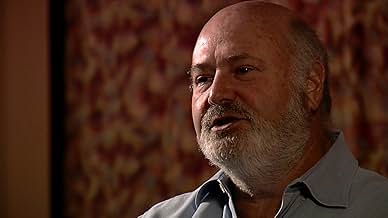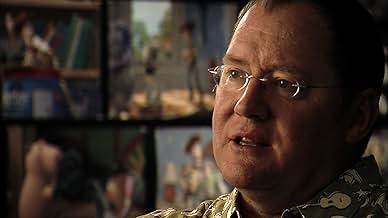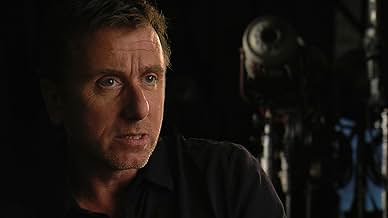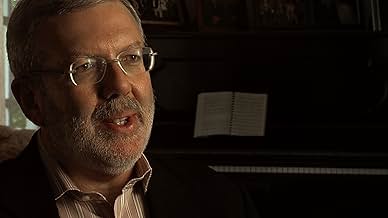Ajouter une intrigue dans votre langueTells the history and importance of The National Film Registry, a roll call of American cinema treasures that reflects the diversity of film, and indeed the American experience itself.Tells the history and importance of The National Film Registry, a roll call of American cinema treasures that reflects the diversity of film, and indeed the American experience itself.Tells the history and importance of The National Film Registry, a roll call of American cinema treasures that reflects the diversity of film, and indeed the American experience itself.
- Réalisation
- Scénario
- Casting principal
- Récompenses
- 3 victoires et 1 nomination au total
- Self
- (images d'archives)
Avis à la une
The beginning of the film talks about the fragile nature of nitrate film stock (the standard for movies until the mid-1950s). You see how the film tends to stick together or turn to powder--though this is a bit rushed, as they never really talked about how combustible these old films are as well. And then you get to hear some film preservationists from the Library of Congress talk about their love of their work. I LOVED this part of the film and really wished they had just focused on this or perhaps done so a bit longer.
The next portion of the film is the biggest problem. A sampling of SOME of the films on the National Film Registry is given and folks say a few blurbs about them and what stands out about these films. Well, considering how important and great these films are, they certainly deserved MUCH more about why they were chosen and why they are so unique. It felt like someone trying to encapsulate the entire Bible or American History in 90 minutes or less! Overall, this is a nice introduction into film preservation and the National Registry, but better films on similar subjects have been made--ones that are more thorough and less episodic--such as "Henri Langlois: The Phantom of the Cinémathèque". Well worth seeing nevertheless.
But then.... this documentary goes into how movies will remind us of our past history... What?.... wrong! Nice try Hollywood, but, anyone with half a brain should understand that movies are movies... Fake, false.... even the ones that say they are based on fact are not factual, or as Hollywood would put it in the credits, "this film was enhanced for dramatic effect".
Then it gets worse... this documentary tries to say that because someone made movies exploiting women, that was the culture of our time. Because someone made a movie that was blatantly racist, that was the culture of our time...it falls to diversification for the sake of diversification. No longer able to base it's own judgment on good vs bad, but more on what's good for specific minority groups.
For example, they have an American Indian man they are interviewing that is appalled at the way Indians were depicted in the movies of the 50's and 60's... Well I have news for him, read your history books, because American Indians were a lot worse than the movies depict. They scalped people... kept the scalps as trophies. You don't hear anything like that today that isn't related to some serial killer. Sorry we took your land, but, check your history books for something in this world called "conquered people". You'll find your weren't the first, and weren't the last either.
If you want to find out what history was like, take a course, read a book, or watch a documentary blessed by a good historian. Don't ever look to Hollywood movies for more than anything but a way to waste a couple hours, you'll never get back.
For a basic plot summary, "These Shadows" describes how certain films (voted on by a panel of motion picture luminaries) are currently being preserved in the Library of Congress (or our "national library") for future posterity. However, problems often exist in restoring the original negatives of even such classic pictures as "Gone With The Wind" or "The Wizard of Oz".
"These Shadows" takes very much of a "big picture" look at film preservation. While it could have spent hours on the fascinating topic of the physical restoration process itself, the filmmakers instead give an overview of the entire Library of Congress process, from its beginning (aka finding the funding) to which movies are selected and finally to how the overall scheme of things will proceed into the future. Any one of these areas could have been focused on in their own documentaries, but here they are condensed into the overall narrative of the project.
Overall, then, this is a fun little documentary that introduces us to the very concept of preserving motion pictures as we would other works of art or historic culture. Anyone who enjoys the film arts will likely agree that its place in our own national culture is very deserving.
*** 1/2 (out of 4)
Wonderfully entertaining documentary taking a look at the National Film Registry, its history and what the group hopes to happen going forward. A brief history is given at the start of the movie but basically in the 1980s Ted Turner bought the MGM library and immediately started colorizing movies. Various Hollywood types including Woody Allen and James Stewart went to Congress to talk about the importance of movies and in 1989 this registry was formed so that we can save future generations movies. The only real negative thing that can be said about this film is that it's way too short even at 92-minutes. I think the most fascinating stuff happens early on when we see the history of the registry and we even get to hear how the twenty-five movies are selected each year. I think this here is the greatest part of the movie because we get to see what type of movies they're looking for and what it takes to get in. There's also an interesting topic going over preservation and why this here is so important and especially when you consider that 80% of silent movies are now lost. Rob Reiner, Christopher Nolan, John Waters, George Takei and Tim Roth are just a few of the famous faces on hand talking about preservation. Many others including people on the board are also interviewed and they talk about some of their favorite films as well as films that they got into the registry. We also have a section devoted to some of the controversial movies including THE BIRTH OF A NATION and THE SEARCHERS. Overall, this is a very entertaining documentary that film buffs are going to love and if you're new to classic cinema this will be a very good place to get some great recommendations.
Le saviez-vous
- AnecdotesAt the Library of Congress, the vaults that hold the highly flammable nitrocellulose footage are maintained at 39 degrees F, and 30% relative humidity.
- Citations
[first lines]
John Ptak: There is nothing like going to a theater, a communal atmosphere, watching something that is bigger than life.
Robin Blaetz: It's dark, you don't look at anybody...
John Ptak: And then the movie started, and it was really, really magical.
- ConnexionsFeatures Blacksmith Scene (1893)
Meilleurs choix
Détails
Box-office
- Budget
- 250 000 $US (estimé)
Contribuer à cette page





















